Does sleep apnea cause loud snoring? Not always! Learn about sleep apnea without snoring, its symptoms, and how to get a proper diagnosis and treatment for a healthier, more restful sleep.
Table of Contents

Introduction
Sleep apnea is a serious sleep disorder characterized by breathing interruptions during sleep. These pauses can last for a few seconds to a minute and occur multiple times throughout the night. While snoring is a common symptom of sleep apnea, many people are surprised to learn that it’s possible to have sleep apnea without snoring. This misconception can lead to undiagnosed cases and potential health risks. This blog post will explore the different types of sleep apnea, the signs and symptoms to watch out for even without snoring, and the importance of seeking diagnosis and treatment.
Types of Sleep Apnea
There are two main types of sleep apnea: obstructive sleep apnea (OSA) and central sleep apnea (CSA).
- Obstructive sleep apnea (OSA): This is the most common type. During OSA, the upper airway becomes blocked during sleep, often due to relaxed throat muscles or a narrow airway. This blockage disrupts breathing, leading to oxygen deprivation and sleep fragmentation. Snoring is a frequent symptom of OSA, but not everyone with OSA snores.
- Central sleep apnea (CSA): This type is less common and occurs when the brain fails to send proper signals to the breathing muscles. As a result, breathing pauses or becomes shallow during sleep. Unlike OSA, central sleep apnea typically does not cause snoring.
Symptoms of Sleep Apnea Without Snoring
Even without the tell-tale sign of snoring, sleep apnea can disrupt your sleep and leave you feeling drained during the day. Here are some key symptoms to watch out for:
- Excessive daytime sleepiness: This is a hallmark symptom of sleep apnea, regardless of snoring. You might feel excessively tired throughout the day, even after a full night’s sleep. Drowsiness can impact your work, relationships, and even increase the risk of accidents while driving.
- Frequent nighttime awakenings: You might wake up briefly throughout the night without even realizing it. These micro-awakenings disrupt your sleep cycle and prevent you from reaching deep, restorative sleep stages.
- Morning headaches: Waking up with a headache can be a sign of sleep apnea, even without snoring. The oxygen deprivation that occurs during breathing pauses can contribute to headaches upon waking.
- Dry mouth and throat: You might wake up with a dry mouth or throat due to mouth breathing during sleep, which can be a sign that your upper airway is partially blocked.
- Mood swings and irritability: Fragmented sleep caused by sleep apnea can lead to mood swings, irritability, and difficulty concentrating during the day.

Risk Factors for Silent Sleep Apnea
While anyone can develop sleep apnea, certain factors increase the likelihood of experiencing silent sleep apnea, particularly central sleep apnea. Here are some key risk factors to be aware of:
- Age: As we get older, the brain’s control of breathing can become less efficient, increasing the risk of central sleep apnea.
- Weight: Carrying excess weight can contribute to both OSA and CSA. Fatty tissue around the neck can narrow the airway in OSA, while obesity can also affect brain signaling that regulates breathing.
- Neck circumference: A larger neck circumference can indicate a narrower airway, increasing the risk of airway blockage in OSA and potentially impacting breathing patterns in CSA.
- Family history: Having a family member with sleep apnea raises your own risk for developing the condition, regardless of the type.
- Medical conditions: Certain medical conditions like heart disease, high blood pressure, and chronic lung disease can increase the risk of both OSA and CSA.
Ease Breathing Device 1

Nogenix Snore Care tubes expand the nasal passage which further maximizes the airflow through them. It allows smooth breathing and eliminates snoring. They are comfortable, reliable and secure.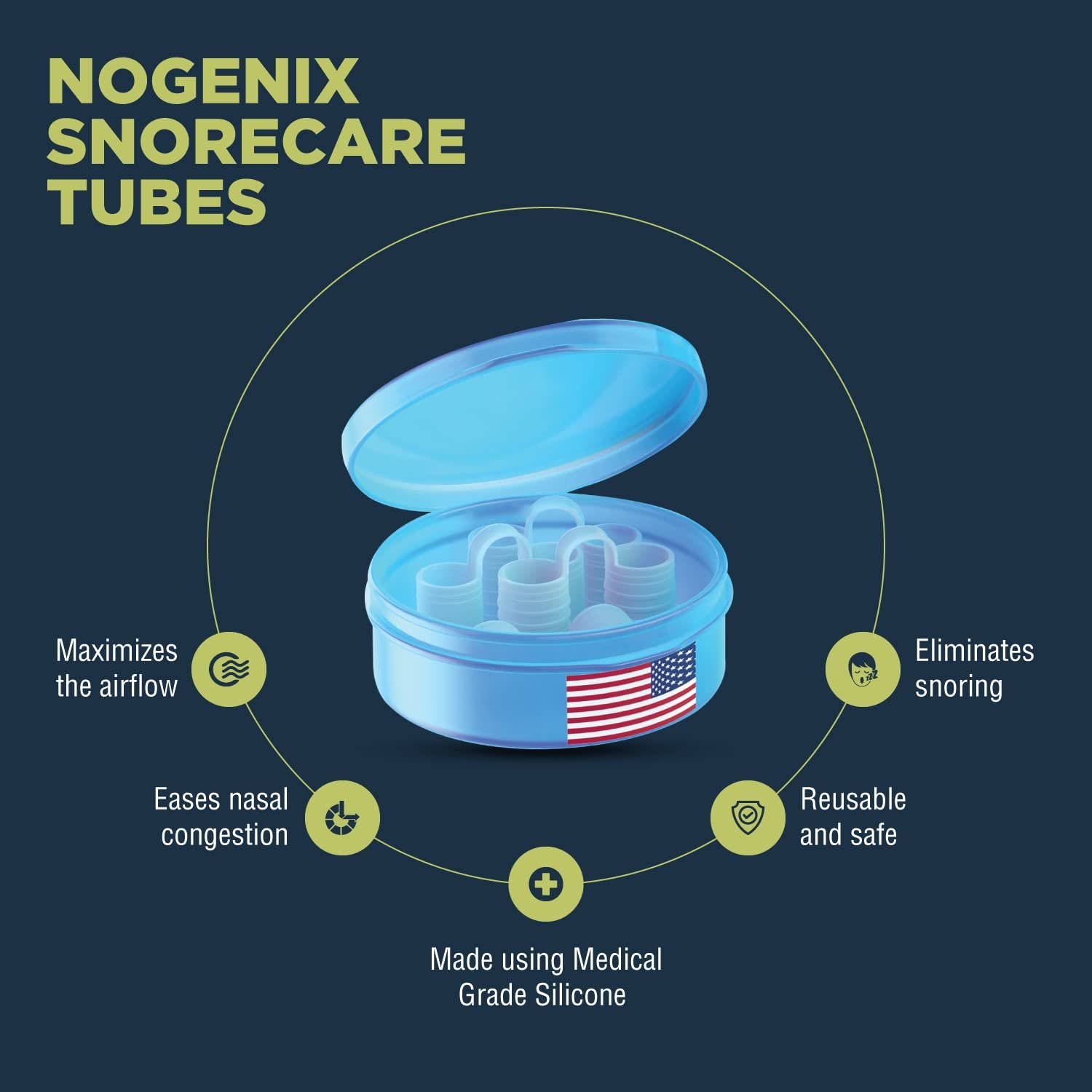
How to Identify Sleep Apnea Without Snoring
Since snoring isn’t always present, diagnosing sleep apnea without it requires a different approach. Here’s how to get screened and potentially diagnosed:
- Consult your doctor: If you experience symptoms like daytime sleepiness, frequent awakenings, morning headaches, or dry mouth, discuss your concerns with your doctor. They can review your medical history and risk factors.
- Sleep study (polysomnography): This is the gold standard for diagnosing sleep apnea. During a sleep study, you’ll stay overnight at a sleep center or use a special device at home. The study monitors your brain activity, breathing patterns, oxygen levels, and muscle movements during sleep, providing a comprehensive picture of your sleep quality and potential breathing disruptions.
- Alternative screening tools: In some cases, your doctor might recommend alternative screening tools. These could involve questionnaires to assess your sleepiness or simplified home monitoring devices that track your breathing patterns during sleep.
Early diagnosis is crucial for managing sleep apnea and preventing potential health complications. If you suspect you might have sleep apnea, even without snoring, talking to your doctor is the first step towards getting a proper diagnosis and finding the right treatment plan.
You may also like Understanding Deviated Septum Sleep Apnea
Consequences of Untreated Sleep Apnea
Leaving sleep apnea untreated can have significant consequences for your overall health and well-being. Here’s why getting diagnosed and treated is crucial:
- Increased risk of cardiovascular disease: The repeated drops in oxygen and stress on your body during sleep apnea episodes can raise blood pressure and strain your heart, increasing the risk of heart attack, stroke, and other cardiovascular complications.
- Poor diabetes control: Sleep apnea can disrupt insulin production and sensitivity, making it harder to manage blood sugar levels in people with diabetes.
- Metabolic issues: Untreated sleep apnea can contribute to weight gain and other metabolic problems by affecting hormones that regulate appetite and metabolism.
- Cognitive decline: The chronic sleep deprivation caused by sleep apnea can impair memory, focus, and overall cognitive function.
- Mood disorders: Sleep apnea can increase the risk of depression, anxiety, and mood swings due to the impact on sleep quality and brain function.
- Daytime accidents: Excessive sleepiness is a major symptom of sleep apnea and can significantly increase your risk of accidents while driving or operating machinery.
In short, neglecting sleep apnea can have a domino effect on your health. Early diagnosis and treatment can help prevent these complications and improve your overall quality of life.
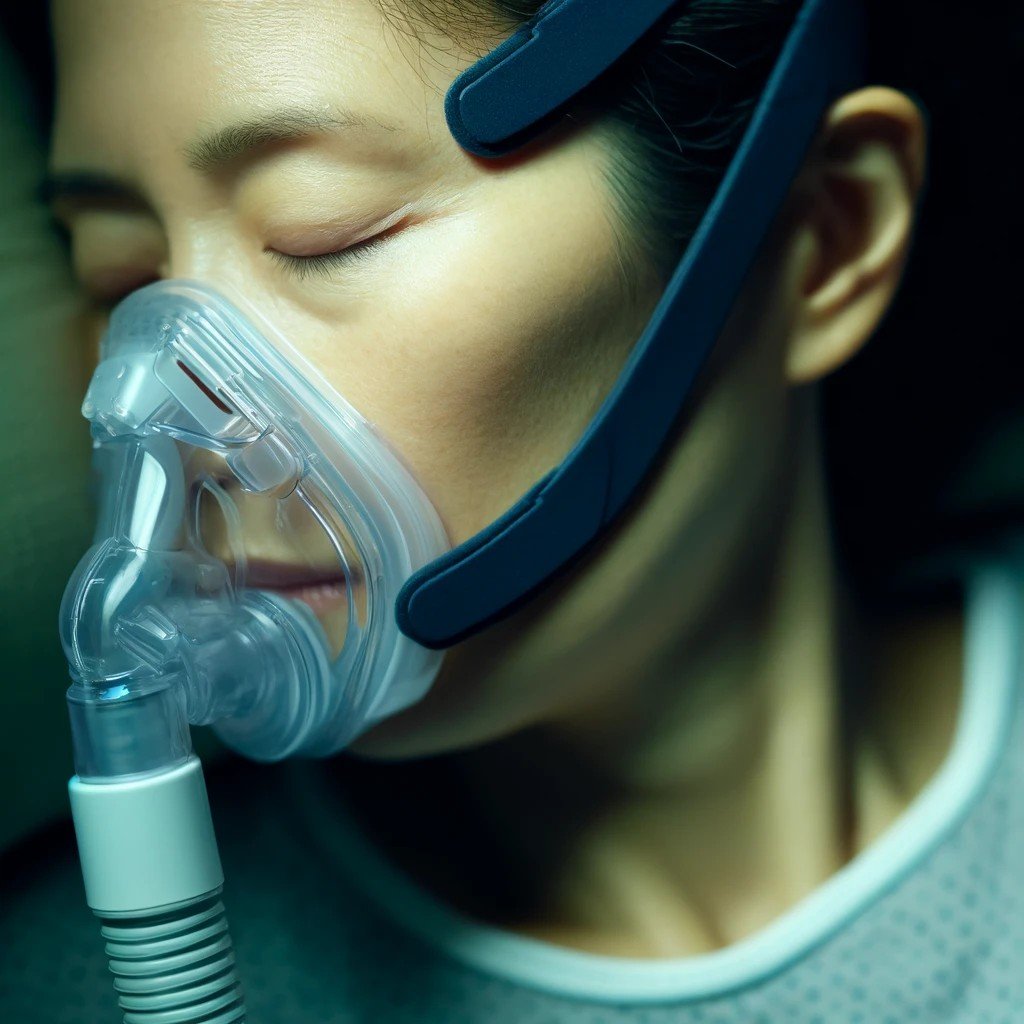
Treatment Options for Sleep Apnea Without Snoring
While CPAP (Continuous Positive Airway Pressure) therapy is the gold standard treatment for sleep apnea, it’s not for everyone, especially those who find the mask uncomfortable or disruptive. Here are some alternative treatment options for sleep apnea, even if you don’t snore:
- Oral Appliance Therapy: These custom-made mouthpieces gently hold your jaw forward, widening the airway and preventing collapse during sleep. They are a good option for mild to moderate OSA and can be more comfortable than CPAP for some patients.
- Weight Loss: If you’re overweight, losing even a small amount of weight can significantly improve your airway anatomy and reduce the severity of sleep apnea.
- Positional Therapy: Sleeping on your side instead of your back can help keep your airway open and reduce sleep apnea events. Special pillows or positional devices can be used to encourage side sleeping.
- Medical Interventions: In some cases, minimally invasive procedures like radiofrequency ablation or pillar implantation can stiffen the tissues in the throat and prevent airway collapse.
- Lifestyle Changes: Developing healthy sleep habits like maintaining a consistent sleep schedule, creating a relaxing bedtime routine, and avoiding caffeine and alcohol before bed can all contribute to better sleep quality and potentially lessen the impact of sleep apnea.
It’s important to discuss these options with your doctor to determine the most suitable treatment plan for your individual needs and the specific type of sleep apnea you have.
Ease Breathing Device 2

Effective Snoring Prevention Solution. The snoring prevention device adopts a unique dual turbine fan design, which opens the nasal passage through oxygen supply and continuous airway circulation, promoting airflow through the nasal cavity, effectively helping you alleviate snoring, solve snoring problems, and improve night sleep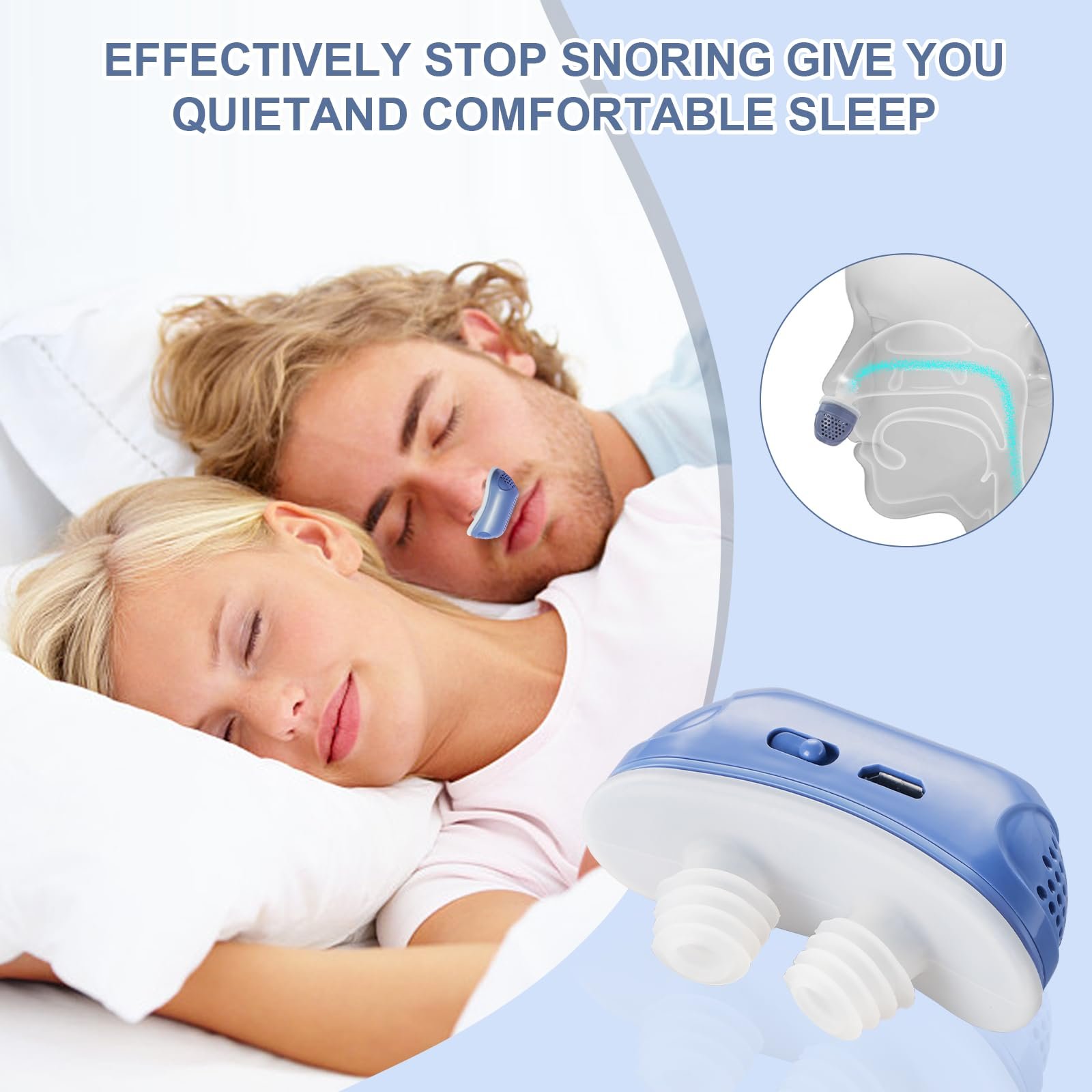
Living With Sleep Apnea Without Snoring
Even with treatment, sleep apnea can be a chronic condition. Here are some tips for managing sleep apnea and improving your quality of life even if you don’t snore:
- Prioritize sleep hygiene: Establish a consistent sleep schedule, go to bed and wake up at the same times each day, even on weekends. Create a relaxing bedtime routine to wind down before sleep.
- Maintain a healthy weight: If you’re overweight, losing weight can significantly improve your sleep apnea symptoms.
- Manage allergies and congestion: Allergies and nasal congestion can worsen airway obstruction during sleep. Talk to your doctor about allergy management strategies and decongestants if needed.
- Avoid alcohol and sedatives: These substances can relax the throat muscles and worsen sleep apnea.
- Exercise regularly: Regular physical activity can improve sleep quality and potentially reduce sleep apnea severity. However, avoid strenuous exercise close to bedtime.
- Quit smoking: Smoking irritates the airways and can worsen sleep apnea symptoms.
- Consider additional support: Support groups or online communities can connect you with others who understand the challenges of sleep apnea and offer encouragement.
By following these tips and adhering to your doctor’s recommended treatment plan, you can effectively manage sleep apnea even if you don’t snore and enjoy a healthier, more fulfilling life.
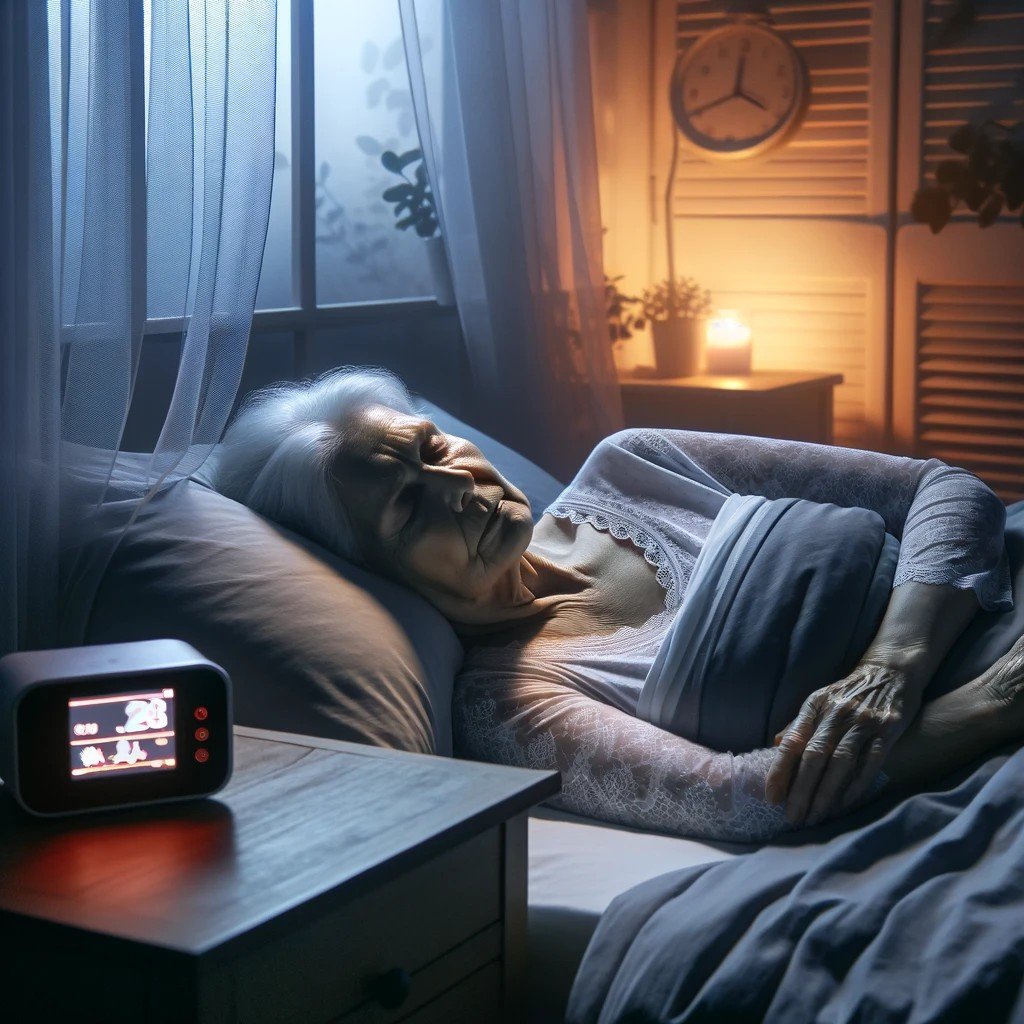
Myths and Misconceptions about Sleep Apnea
Sleep apnea is a complex sleep disorder, and there’s a lot of misinformation floating around. Here are some common myths debunked:
- Myth: Sleep apnea only affects overweight people. While weight is a risk factor, people of all sizes can develop sleep apnea due to factors like neck anatomy or genetics.
- Myth: Snoring is always a sign of sleep apnea. Snoring is a common symptom, but not everyone who snores has sleep apnea. Conversely, some people with sleep apnea don’t snore at all.
- Myth: Sleep apnea isn’t a serious condition. Left untreated, sleep apnea can increase the risk of heart disease, stroke, diabetes, and other health problems.
- Myth: There’s no treatment for sleep apnea besides CPAP. CPAP is a common treatment, but other options like oral appliances, weight loss, and lifestyle changes can be effective for some people.
- Myth: Children can’t get sleep apnea. Children can develop sleep apnea, and it’s important to be aware of the signs and symptoms.
If you suspect you might have sleep apnea, regardless of whether you snore, talk to your doctor. Early diagnosis and treatment can make a big difference in your health and well-being.
The Link Between Sleep Apnea and Dental Health
You might be surprised to learn that sleep apnea and dental health are connected. Here’s how:
- Dry Mouth: Sleep apnea, especially when accompanied by mouth breathing, can significantly reduce saliva production. Saliva plays a crucial role in washing away bacteria and food particles that contribute to tooth decay and gum disease.
- Teeth Grinding (Bruxism): People with sleep apnea may unconsciously clench or grind their teeth during sleep. This can be a response to the body trying to open the airway or a consequence of sleep disruptions. Bruxism can damage teeth, leading to cracks, chips, and increased sensitivity.
- TMJ Disorders: Temporomandibular joint (TMJ) disorders affect the jaw joint and muscles. Sleep apnea can contribute to TMJ issues, causing pain, headaches, and difficulty chewing.
- Overall Oral Health: Chronic sleep deprivation caused by sleep apnea can weaken the immune system, making you more susceptible to oral infections like gingivitis (gum inflammation) and periodontitis (gum disease).
If you have sleep apnea, it’s important to maintain good oral hygiene and schedule regular dental checkups. Your dentist can also monitor your teeth for signs of bruxism and TMJ problems.
By managing your sleep apnea and taking care of your oral health, you can improve your overall well-being.
Ease Breathing Device 3
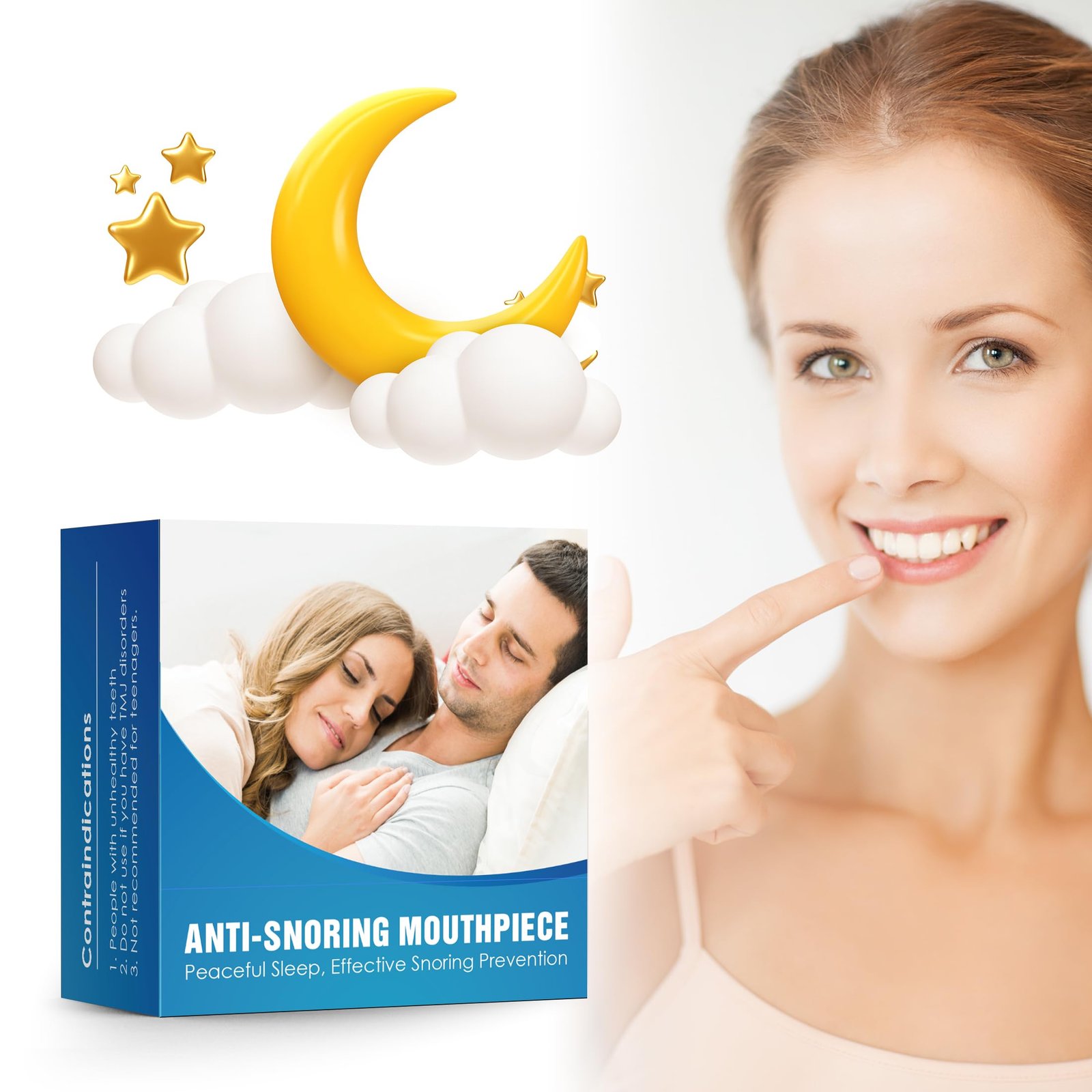
Safe and No Side Effects: The anti-snoring device is made of soft medical grade silicone. No BPA material, safe and reliable, will not cause any allergy or side effects.
Portable-Adjustable: Our anti-snoring device has four positions, which can be adjusted to different positions to ensure that it fits the shape of your teeth, and the anti-snoring device has a protective case, which is easy to carry, suitable for travel, vacation, business trip, etc.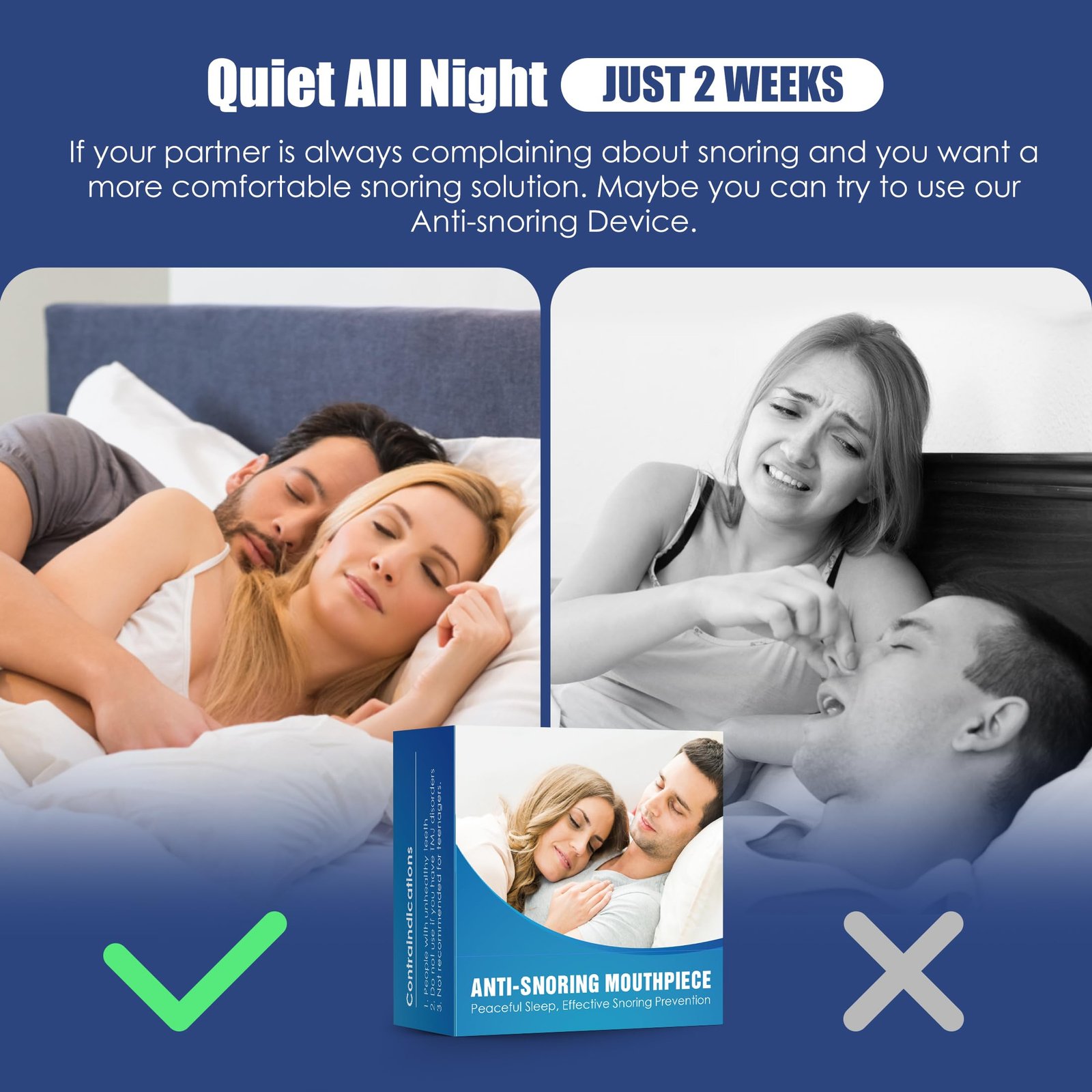
Resources for Sleep Apnea Patients without Snoring
Living with sleep apnea, even without snoring, can be challenging. Here are some resources to help you navigate your diagnosis and find support:
- American Academy of Sleep Medicine (AASM): https://aasm.org/ – This website offers comprehensive information on sleep apnea, including diagnosis, treatment options, and healthy sleep habits.
- American Sleep Apnea Association (ASAA): https://www.sleepapnea.org/ – The ASAA provides patient education resources, treatment information, and advocacy efforts related to sleep apnea.
- Sleep Health: The Journal of the National Sleep Foundation: https://www.sleephealthjournal.org/ – This online journal features research articles and patient-oriented content related to various sleep disorders, including sleep apnea.
- MyApnea.org: https://myapnea.org/ – This website is a community forum specifically for people with sleep apnea. It offers a space to connect with others, share experiences, and ask questions.
Additionally, consider joining a local sleep apnea support group. These groups can provide valuable peer support and connect you with others who understand the challenges of living with sleep apnea. You can find information on local support groups through the resources listed above or by contacting your doctor’s office.
Remember, you’re not alone in this. By utilizing these resources and working with your doctor, you can effectively manage your sleep apnea and achieve a better night’s sleep.

Upcoming Research and Advancements in Sleep Apnea Treatment
The field of sleep apnea treatment is constantly evolving, with exciting research exploring new and innovative approaches. Here’s a glimpse into what the future might hold:
- Medications: Researchers are developing medications that target the neurological pathways involved in airway muscle control during sleep. These medications aim to activate the muscles that keep the airway open, potentially offering a non-invasive alternative to CPAP for some patients.
- Neuromodulation therapies: Techniques like hypoglossal nerve stimulation are being investigated as potential treatments for sleep apnea. This approach involves implanting a device that stimulates the nerve responsible for tongue movement, helping to keep the airway open during sleep.
- Minimally invasive surgical procedures: Advancements in minimally invasive procedures like pillar implantation and radiofrequency ablation are being refined to offer more targeted and potentially long-lasting solutions for specific types of sleep apnea.
- Personalized medicine: The future of sleep apnea treatment might involve a more personalized approach. By analyzing genetic and anatomical factors, doctors could tailor treatment plans to individual needs, leading to more effective and targeted therapies.
- Remote monitoring and telemedicine: Advancements in technology could enable remote monitoring of sleep apnea and allow for telemedicine consultations with sleep specialists. This could improve access to care, especially for those in remote areas.
These are just a few examples of the promising research underway. While more studies are needed before widespread adoption, these advancements offer hope for more comfortable, effective, and personalized treatment options for sleep apnea in the years to come.
Conclusion
Sleep apnea without snoring can be a hidden culprit behind daytime fatigue and disrupted sleep. By understanding the symptoms, risk factors, and available treatments, you can take control of your sleep health. Remember, early diagnosis is key. If you experience any signs suggestive of sleep apnea, reach out to your doctor for a proper evaluation. With the right approach, you can manage sleep apnea effectively, even without the tell-tale sign of snoring, and achieve a better night’s sleep for a healthier, more fulfilling life.
Don’t let silent sleep apnea steal your sleep! Talk to your doctor today and take the first step towards a restful night’s sleep.



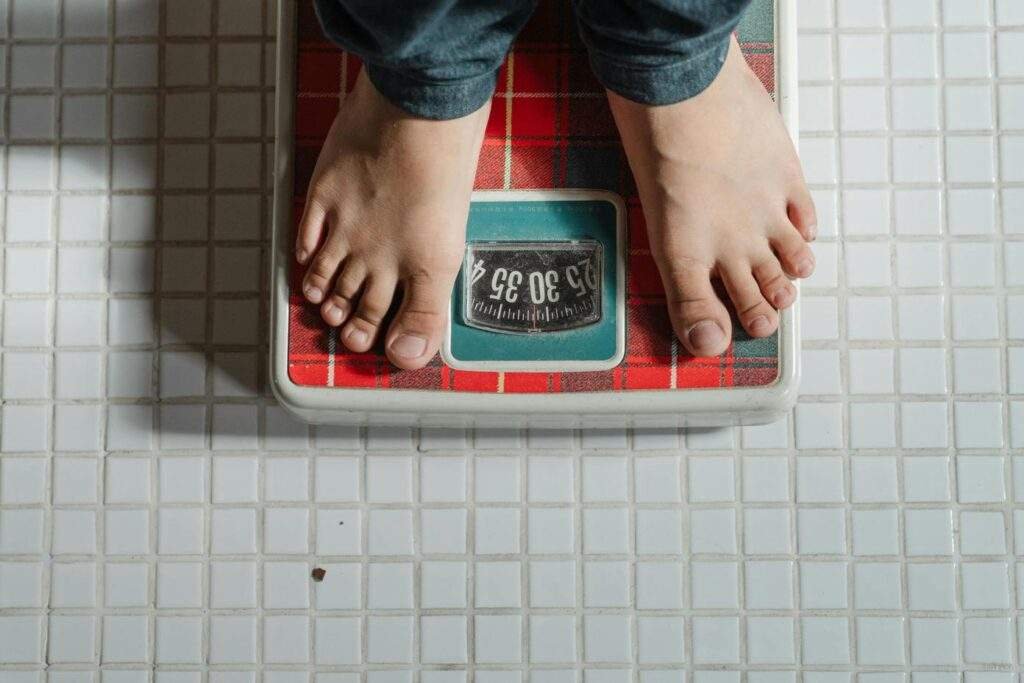
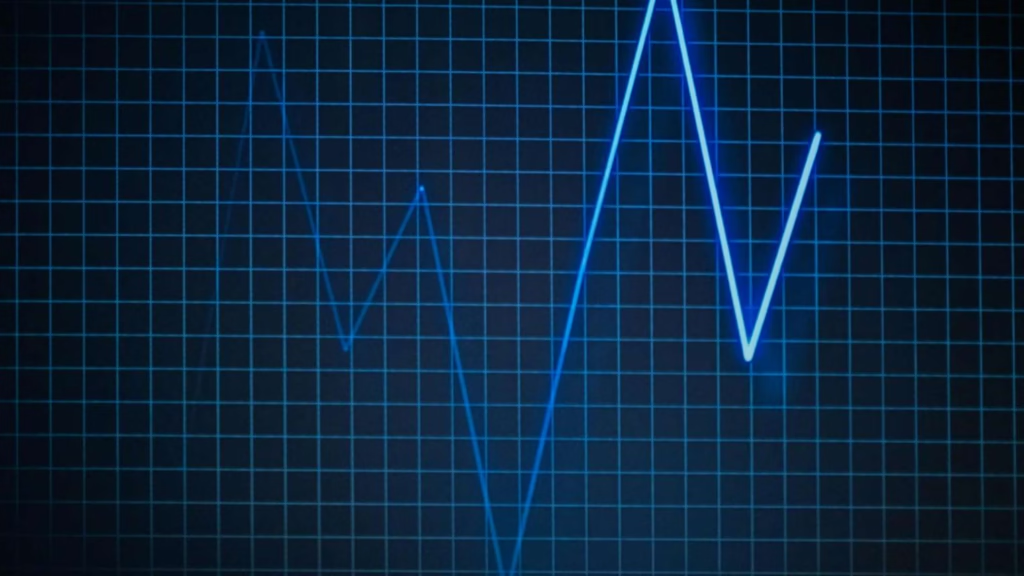
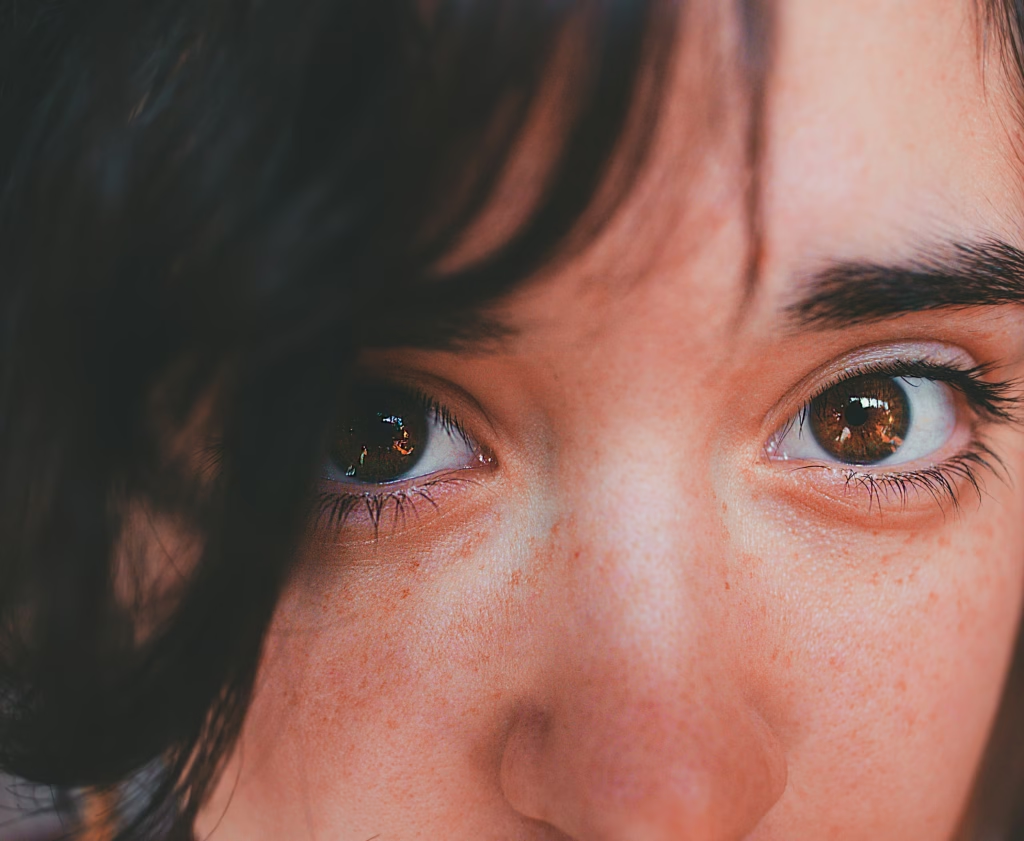
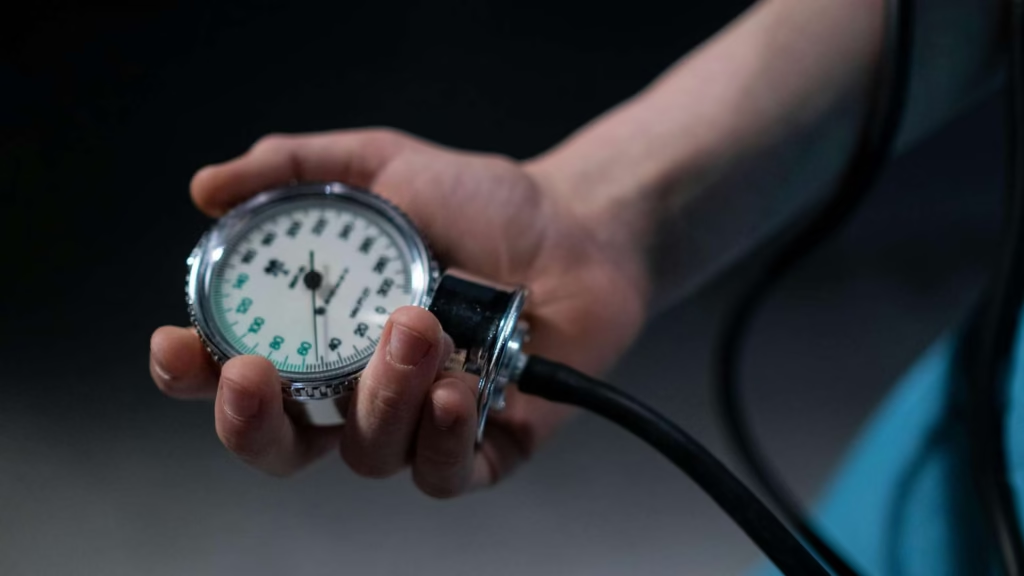



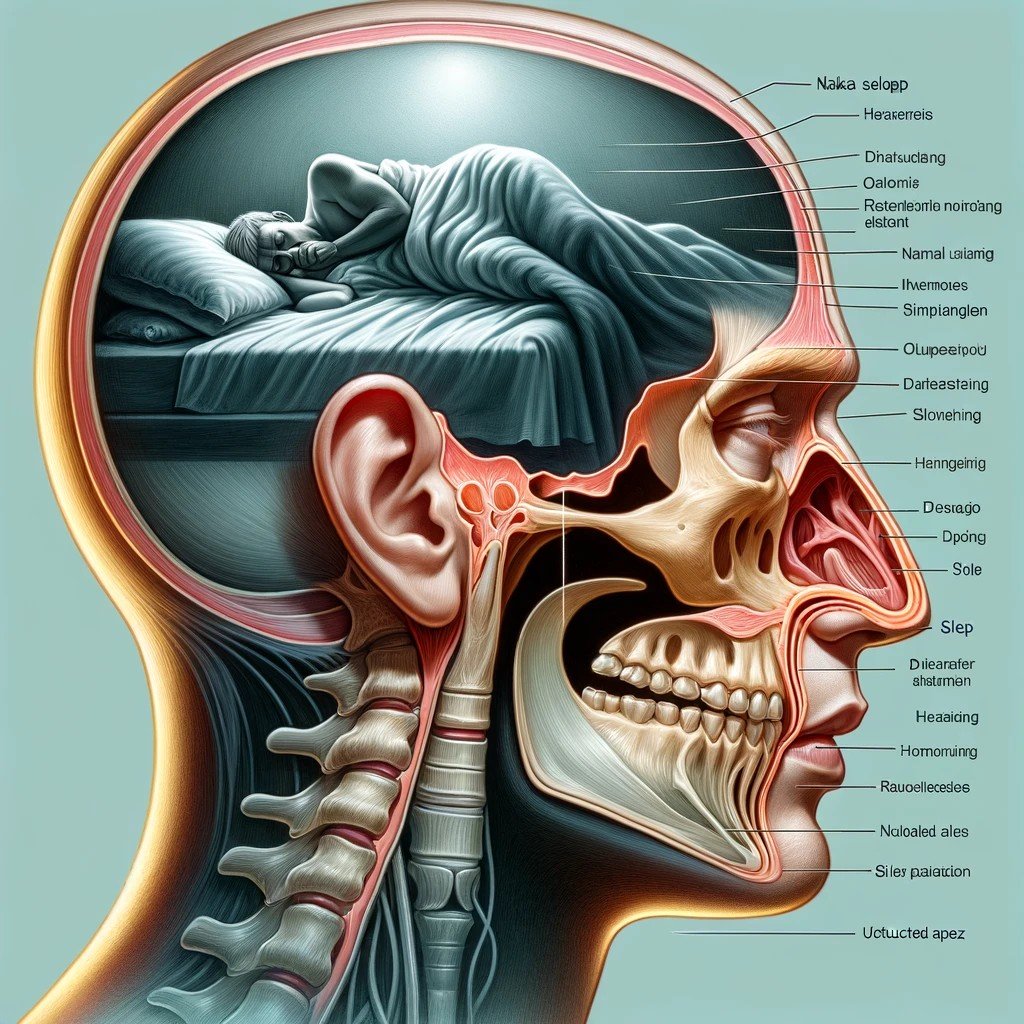

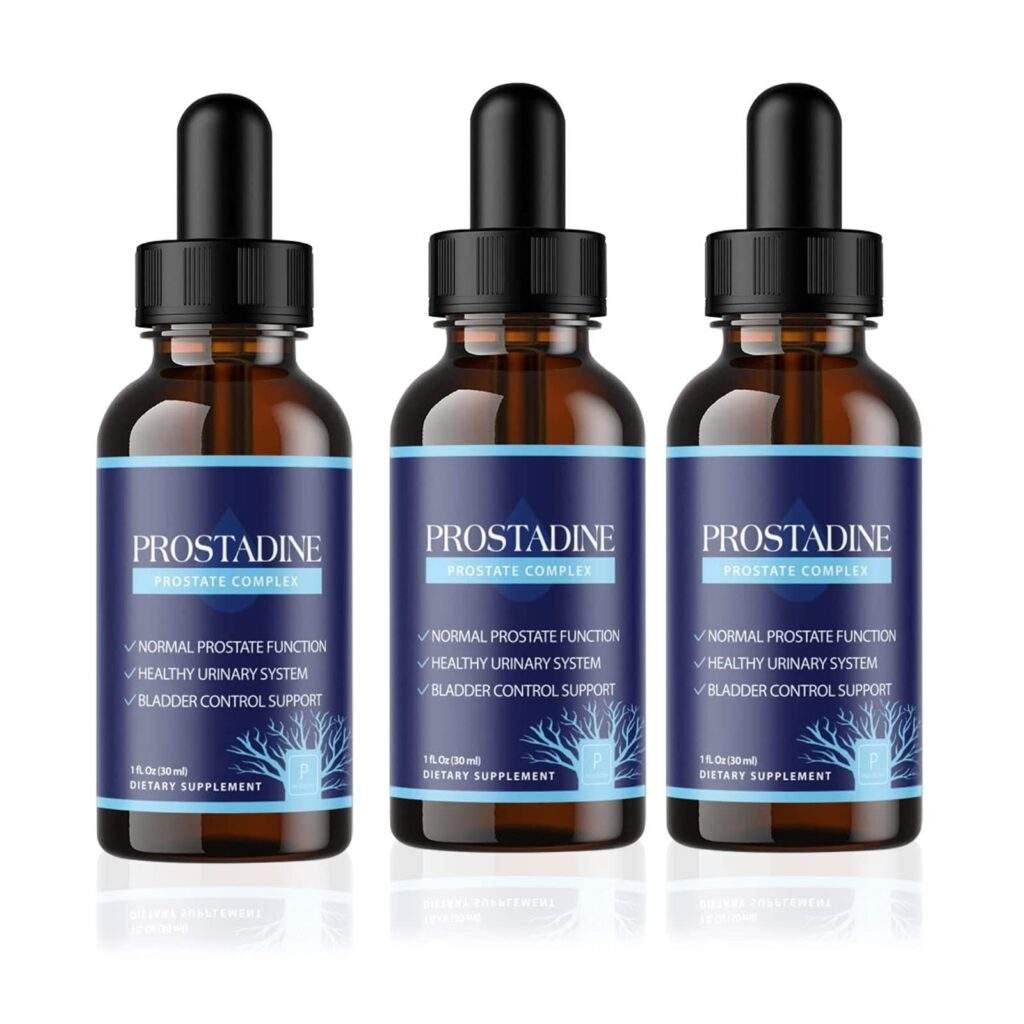



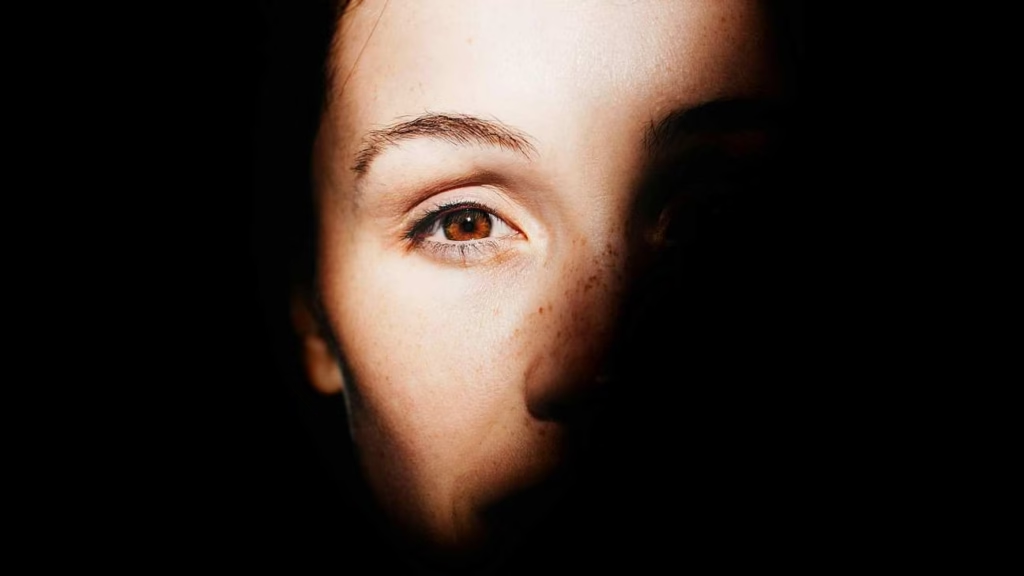

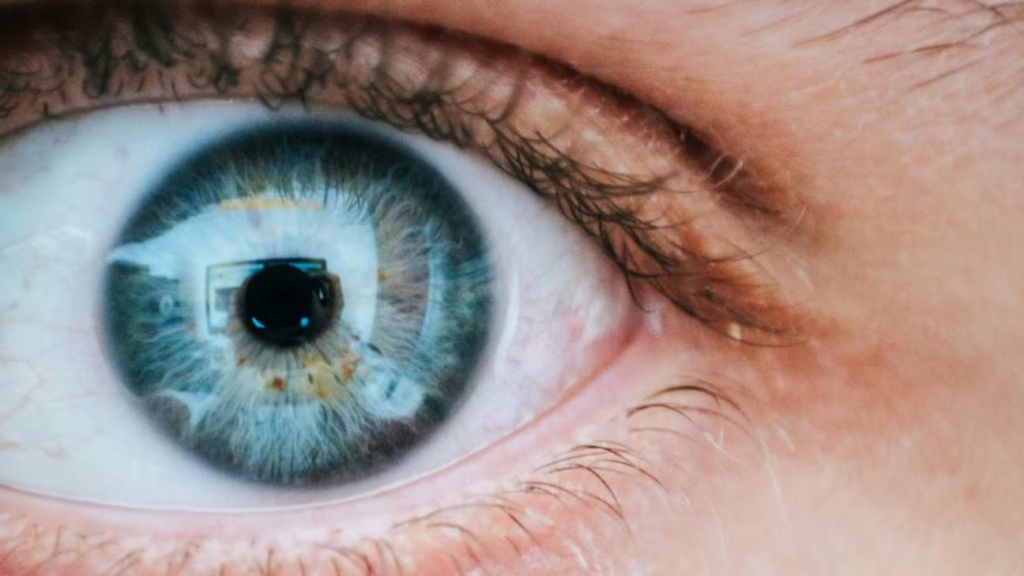


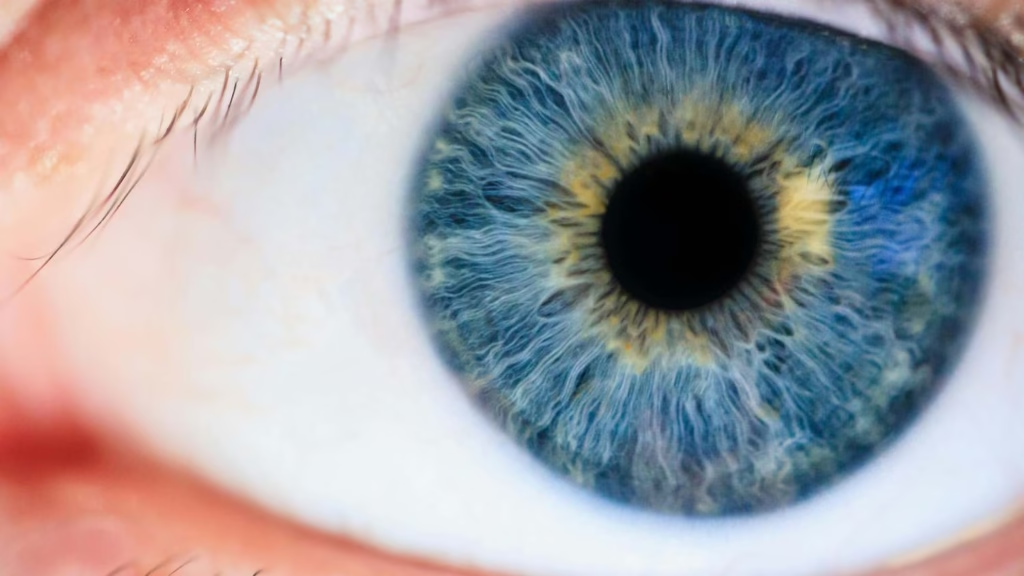
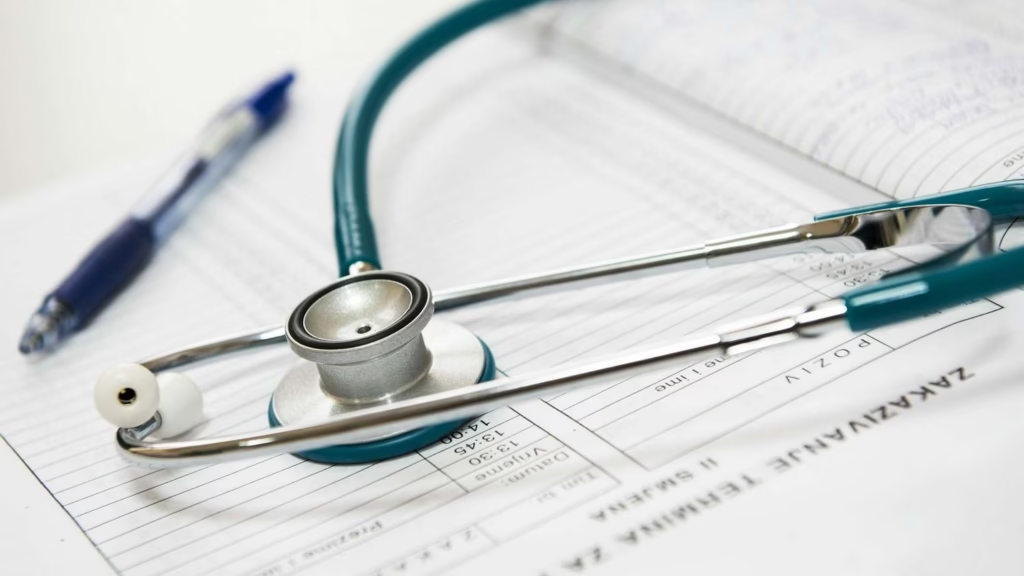

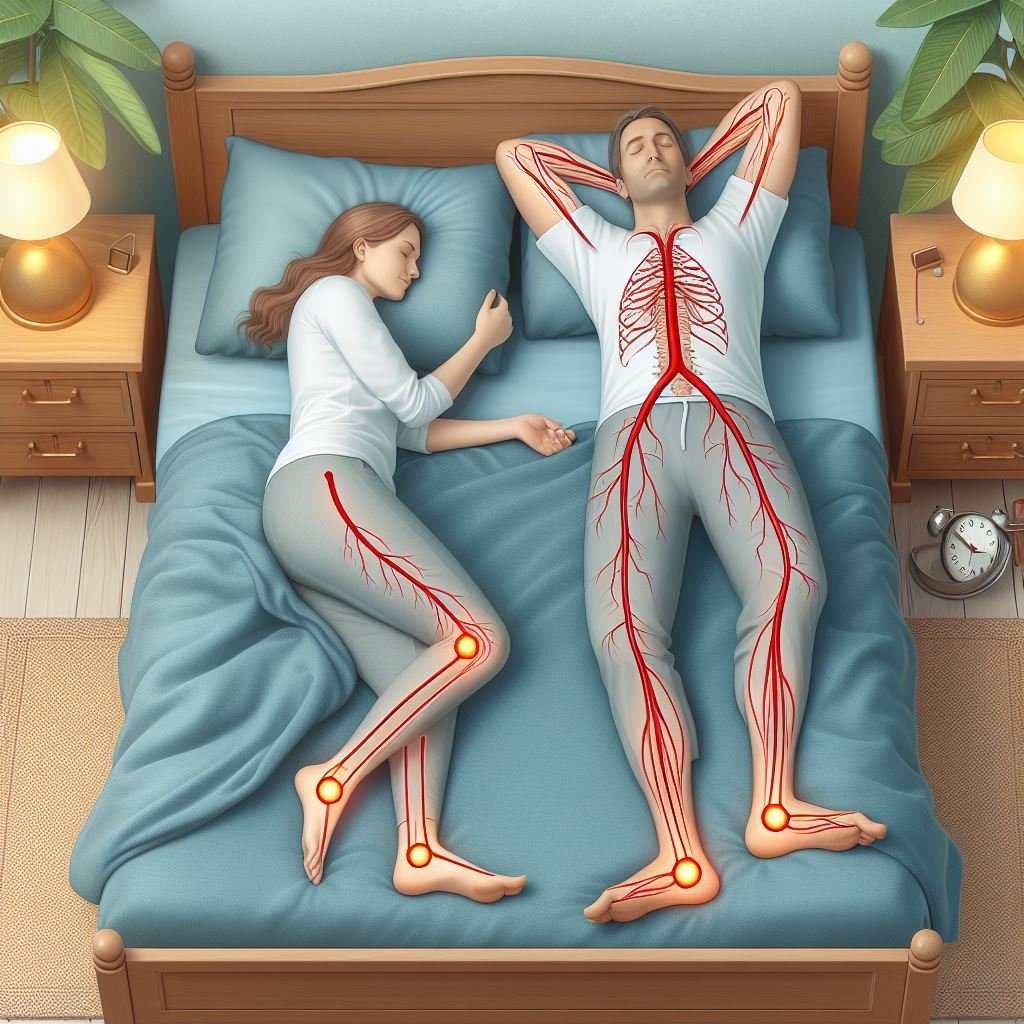
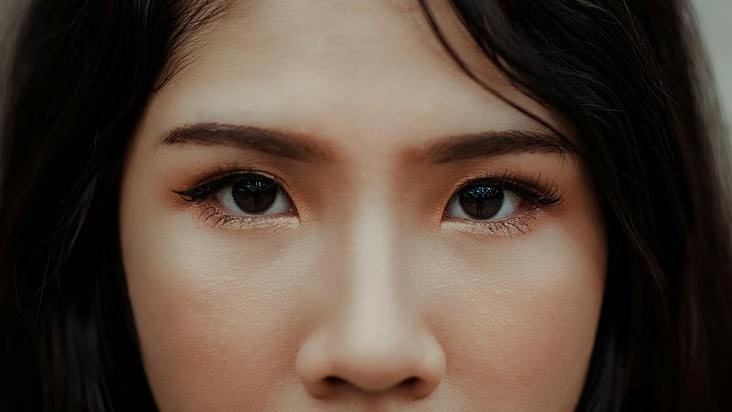
Comments are closed.